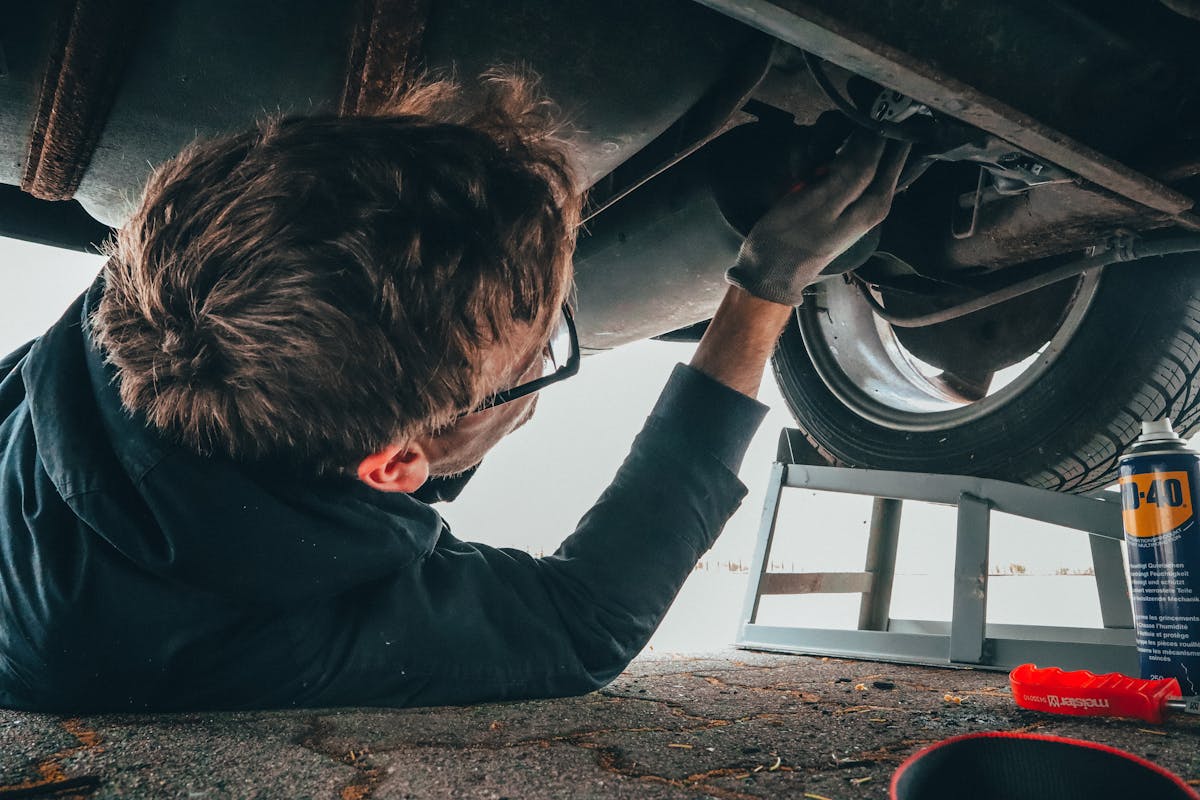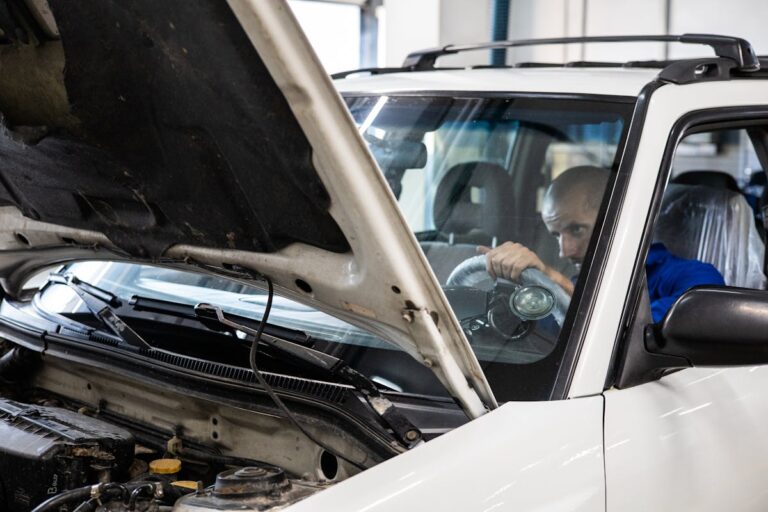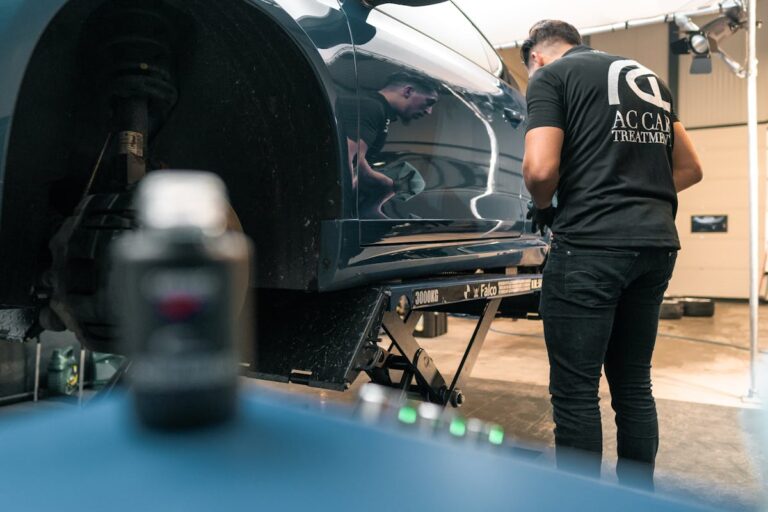The complex interplay between car defects and accidents often leaves victims in a quandary regarding their legal recourse. It is essential to remember that in such situations, product liability law can be an avenue to hold manufacturers accountable for their defective vehicles. The process, though intricate, involving documenting evidence and consulting specialized attorneys, can lead to compensation for medical expenses, lost wages, and pain and suffering. Understanding one’s rights post such an incident is consequently important, prompting us to explore this topic further.
Understanding Car Defects
In the domain of automotive safety, understanding car defects is paramount. Car safety extends beyond responsible driving; it is deeply entwined with the mechanical soundness of the vehicle itself. A defect, whether it is a manufacturing flaw or a design error, can pose substantial risk to the driver, passengers, and other road users.
Defect prevention is a critical aspect of maintaining car safety. Manufacturers bear a legal obligation to guarantee their products are free from defects that could cause harm. They are expected to exercise due diligence in design, production, and quality control processes. In spite of this, defects can still occur and result in calamitous accidents.
Being well-informed about car defects is not only beneficial but essential. The knowledge empowers car owners to identify potential mechanical hazards, seek timely repairs, and take preventative measures. Additionally, understanding the legal implications of car defects can guide victims in seeking compensation for damages incurred due to negligence on the part of the manufacturer.
Common Car Defects and Accidents
Understanding the nature and frequency of car defects is essential in predicting and preventing potential accidents. The correlation between these defects and accidents is a complex but vital aspect of automobile safety and legal discussions. Through case studies, we will examine the circumstances under which these defects have led to accidents, which will aid in understanding the legal implications and remedies available.
Identifying Common Car Defects
Car defects often slip through the cracks, leading to unforeseen accidents that can cause significant harm and damage. Identifying these flaws is an essential step towards defect prevention and improved safety on the road.
Faulty brakes, tire blowouts, steering problems, and malfunctioning airbags are among the most prevalent car defects. A proactive approach to car maintenance plays a key role in identifying these issues early and preventing potential accidents. Regular inspections of brake systems, tire conditions, and steering mechanisms are fundamental to maintaining a safe vehicle.
Airbag defects, although less noticeable, can be lethal in the event of a collision. It’s important to pay attention to any recall notices issued by car manufacturers, as these often indicate widespread defects that need immediate attention.
In a legal context, drivers who diligently maintain their vehicles and still fall victim to car defects may have grounds for a product liability claim. However, the onus is on the driver to guarantee their vehicle is well-maintained and free from defects. Remember, prevention is better than cure, and regular car maintenance is the most effective form of defect prevention.
Defects Leading to Accidents
When defects in vehicles lead to accidents, the consequences can be devastating. These mishaps often result from malfunctions in essential car safety features such as brakes, airbags, or tires. A defect can turn a routine drive into a life-threatening situation, underlining the importance of accident prevention and regular car maintenance.
In the area of safety, car manufacturers carry a distinct responsibility. They are required by law to uphold stringent manufacturing standards to guarantee their vehicles are safe for use. If they fail to meet these standards and defects occur, leading to accidents, they may be held legally accountable.
Car defects that lead to accidents are not just a grave concern for the individual driver; they pose a significant public safety risk. As a result, awareness about common defects and their potential to cause accidents is critical. Informed consumers can protect themselves, their families, and other road users by identifying and addressing defects promptly.
While it is impossible to eliminate all risk, understanding the connection between car defects and accidents can help drivers take proactive steps towards prevention. As consumers, our vigilance can compel manufacturers to prioritize safety, ultimately reducing the incidence of devastating accidents.
Case Studies: Defects Accidents
Despite the inherent risks, many instances of car defect accidents serve as illustrative case studies that highlight the importance of vigilance and proactive measures. One such case involved defective brake systems, prematurely wearing out and failing unexpectedly, leading to devastating collisions. The defect consequences in this scenario resulted in both severe physical injuries and significant financial losses.
But what if this could have been prevented? Accident prevention, in this situation, requires two main components: thorough vehicle inspections and timely maintenance. A regular, detailed check of the car’s systems could have identified the defective brake, and proper maintenance might have averted the disaster.
In another case, an automobile’s airbags failed to deploy during an accident due to a manufacturing defect. The victims in the crash suffered far more severe injuries than they would have had the airbags functioned properly. These are just two examples among many that illustrate the serious consequences of vehicle defects, emphasizing the necessity for proactive measures in accident prevention, and the legal implications for manufacturers and victims alike.
These case studies serve to highlight that a car’s safety should never be compromised. It is a legal obligation for manufacturers to guarantee their products are safe for use, and a right for consumers to demand it.
Legal Definitions: Product Liability
As we navigate through the complex landscape of car defect accidents, it becomes essential to comprehend the concept of product liability. This legal doctrine holds manufacturers and sellers accountable for placing defective products in the hands of consumers, leading to potential accidents. Consequently, a thorough understanding of product liability can greatly empower victims of car defect accidents, providing them with a robust legal foundation for their claims.

Understanding Product Liability
Maneuvering the legal maze of product liability can be an intimidating task for victims of car defect accidents. This legal concept revolves around the responsibility that manufacturers, distributors, and sellers bear if their product, when used as intended, causes harm to consumers. The cornerstone of this premise is product safety, which is a fundamental expectation that consumers have from any product they purchase.
In the context of car defects leading to accidents, product liability becomes even more critical. A car defect can potentially lead to catastrophic consequences, and the victims have the right to seek compensation through liability claims. It is vital to understand that these claims are not about proving negligence but rather showing that the product was defective and that it caused harm.
The legal landscape of product liability is complex and multifaceted, often requiring the expertise of a seasoned attorney. However, the principle remains that if a consumer is harmed by a product due to a defect, they have the right to seek damages. Victims of car defect accidents should arm themselves with a clear understanding of product liability to guarantee their rights are protected.
Product Liability in Accidents
Understanding product liability in the context of accidents necessitates an in-depth exploration of the legal definitions and principles underlying this key term. Product liability refers to a manufacturer or seller being held liable for placing a defective product into the hands of a consumer. Strict product liability, a legal doctrine prevalent in many states, doesn’t require the injured party to prove that a manufacturer was negligent, but merely that the product was defective.
In the area of automotive regulations, this means that a car manufacturer could be held accountable if a defect in their product caused an accident. Liability claims in such cases can be complex, as it must be clearly demonstrated that the defect caused the accident, and not driver error or other external factors.
If a victim can successfully establish that the car accident was the direct result of a defective automobile, they may be entitled to compensation for damages, which could include medical bills, loss of wages, and pain and suffering. Accordingly, understanding product liability is essential for victims seeking legal redress in car defect accidents. Awareness of one’s rights under the law can lead to justice for those wrongfully injured.
Role of Car Manufacturers in Accidents
Often, the role of car manufacturers in accidents is overlooked, given the immediate focus on drivers involved. Yet, it is essential to contemplate the manufacturer’s responsibility, as defects in car design or assembly can contribute greatly to accidents.
Manufacturers have a legal and ethical duty to guarantee consumer safety. This involves every stage of the production process, from design to production, and includes providing clear instructions and warnings about any potential risks. When these standards aren’t upheld, and a car defect leads to an accident, the manufacturer can be held liable.
Pursuing a claim against a car manufacturer requires demonstrating that the defect was present at the time of sale and led directly to the accident. It can be a complex process, requiring expertise in both legal and automotive matters. However, holding manufacturers accountable can lead to safer practices in the industry and provide compensation to the victims of these accidents.
Steps to Take Post-Accident
When faced with an accident caused by a car defect, there are several vital steps to follow. Prioritize your safety and the safety of others involved. Immediately call for medical help, if necessary, and inform law enforcement.
Next, document the accident meticulously. This includes taking photographs of the accident scene, the vehicles involved, and any visible injuries. Collect contact information from witnesses, and obtain a copy of the police report. This accident documentation will prove invaluable when establishing the defect’s role in the incident.
After confirming your immediate safety and beginning accident documentation, it is important to notify your insurance company about the accident. Submit your insurance claims promptly, providing them with as much detailed information about the incident as possible. It’s wise to speak with an attorney before giving a recorded statement to the insurance company to guarantee your rights are protected.
Lastly, preserve the vehicle in its post-accident state, if possible. Do not repair or dispose of it. The vehicle is a vital piece of evidence, as an expert may need to inspect it to verify the defect and its role in causing the accident. The car defect’s confirmation can greatly strengthen your potential legal case.
Legal Options for Car Defect Victims
Once you have taken these important steps to protect your safety, gather evidence, and report the incident, your focus can shift towards understanding your legal rights and options. Car defect victims have a right to legal recourse and can initiate compensation claims.
Under product liability law, car manufacturers are obligated to guarantee their vehicles are safe for use. If a defect is found to be the cause of an accident, the manufacturer can be held liable. Victims may file a lawsuit seeking damages for medical expenses, lost wages, pain and suffering, and more.
The process begins with hiring a lawyer who specializes in product liability. They can help you navigate the complex legal terrain and maximize your chances of a successful claim. Your legal counsel will assess the facts, gather further evidence, and work with experts to strengthen your case.
When pursuing compensation claims, it’s vital to remember that each case is unique and outcomes depend on specific circumstances. As a result, it’s important to seek professional legal advice tailored to your situation. The journey to justice can be arduous, but with a competent legal team, you can assert your rights and seek the compensation you deserve.
Real-Life Case Studies of Car Defects
Have you ever wondered how car defect cases play out in real life? Understanding the complexities of these cases becomes easier through real-world examples.
One such case involves a renowned car manufacturer, Ford, who in the late ’70s faced a series of lawsuits due to the Pinto’s fuel system defects resulting in fatal accidents. After thorough defect analysis, it was revealed that the positioning of the fuel tank led to the tragic incidents. The cases resulted in substantial financial settlements and spurred changes in safety standards.
Similarly, Toyota faced multiple lawsuits in 2009 and 2010 due to unintended acceleration issues causing accidents. Post defect analysis, it was found that the floor mats and the electronic throttle control system were accountable. Toyota ended up recalling 9 million cars worldwide and paid billions in fines and settlements.
These real-world examples underline the gravity of car defects and their impacts. They also illustrate the legal pathways victims can pursue for compensation. Understanding these case studies is critical for victims seeking justice and manufacturers working to guarantee safety. The legal landscape in car defect cases is complex but navigable with the right knowledge and legal assistance.
Frequently Asked Questions
What Compensation Can I Expect From a Car Defect Lawsuit?
Compensation from a car defect lawsuit typically involves economic damages which cover tangible losses. These can include medical expenses, loss of earnings, and property damage, depending on the severity of the negligence claim.
How Can I Prove That the Defect Caused the Accident?
To demonstrate a defect caused the accident, gather extensive defect evidence, including expert testimony. An in-depth accident analysis, including vehicle inspection and reconstruction, can also substantiate the claim, establishing the defect’s role in the incident.
Can the Dealership Be Held Accountable for Selling a Defective Car?
Dealerships can potentially be held liable under consumer protection laws if they knowingly sell a defective car. Legal counsel can advise on pursuing a case and proving dealership liability in these circumstances.
What Are the Time Limits for Filing a Lawsuit for a Car Defect Accident?
Statute of limitations for filing a lawsuit concerning a car defect accident varies by jurisdiction. Generally, it ranges from one to four years from the accident or discovery of the defect. Consult a lawyer for specifics.
Are There Any Laws Protecting Car Manufacturers in Defect Cases?
Yes, car manufacturers can utilize legal defenses in product liability cases, such as claiming misuse of the product or asserting that the plaintiff failed to heed warnings or instructions, which contributed to the accident.





